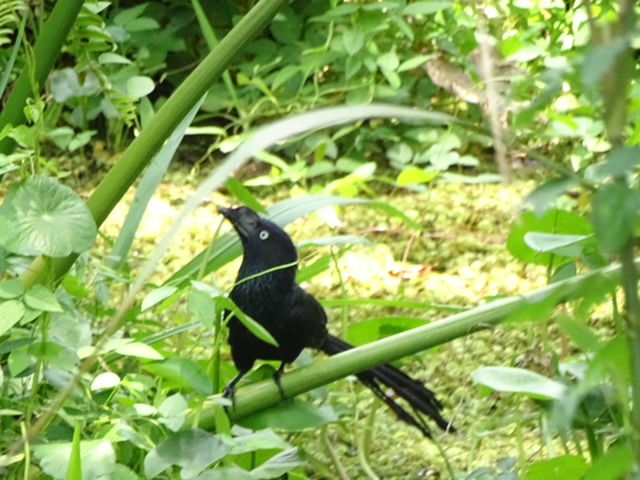After the tram and tower, we went onto the sloth sanctuary.
One of the gentleman I met in the lobby here told us that the sanctuary had only a few sloths on display so I was not expecting much, but felt inclined to go anyway.
The sanctuary is privately run on donations only (not supported by the gov’t.) and from the tickets that this hotel sells. They get only a few dollars for the sanctuary itself.
They had five sloths that we could look at. And as is their slothian way, they were asleep, hanging upside down, each in its own little “tree”. These sloths cannot be put out into the wild again because they have had way too much contact with humans, some probably rescued from people keeping them as pets or what-have-you. The woman we spoke with is lovely with them (they all have names) and was in the process of giving Fula the vegetables she hadn’t finished at the 10 a.m. feeding. At 4 o’clock, they woke and reached out their arms for her to hug them and carry them to their nicer digs for the night.
There are many other animals at the sanctuary which we could not visit. These are being rehabilitated to go back in the wild, so contact with humans is limited.
There was a box for donations and we were happy to oblige, but I noticed that no others on our tour went near it. Sigh!
Luckily, we have had some great up-close sloth moments in Costa Rica, so I wasn’t too disappointed. But I would have liked to cuddle one.
This morning, we grabbed our binoculars and walked down past the American heritage houses and down the road to the canal.
In the greenery at the water's edge, we saw male and female jacanas, (the one below is the female). They have VERY LONG TOES for walking on floating greenery. We also saw both male and female purple gallinules with a tiny little dark-haired chick, and several Ani. Anis are very large with a bump on their nose and long tails.
 |
| Smooth-billed Ani |
Another shot-
This dredger (below) was gobbling up the greens along the shore to keep the waterway open.
Always something new to see.
Adios, Hansi Fri, Mar 31 at 4:30 PM
Adios, Hansi Fri, Mar 31 at 4:30 PM












No comments:
Post a Comment